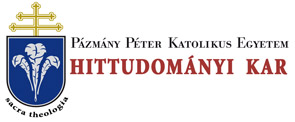Folia Theologica et Canonica 4. 26/18 (2015)
IUS CANONICUM - Szabolcs Anzelm Szuromi, O.Praem., The systematic development of the Liturgy of Hours during the first centuries - based on the Jewish and Christian tradition
156 SZABOLCS ANZELM SZUROMI, O.PRAEM. stitutional historical origins12, which are well approved by the primary written sources. It is obviously true, that the community prayer of psalms received an exclusive place in the vigil, before - or even within - the Holy Mass in the early time of the Church, but it does not mean the only appearance of the “primitive” Divine Office in the day to day life of the Church. There is no doubt, that the custom of daily praying of psalms is one of those continuous liturgical traditions which have been inherited from the Jewish tradition as it is enlightened in Peter Erdo’s analysis of the institutional historical correlations between Israel and the Christian Church.13 We have quite exact information about the life of the first Christians in Palestine, particularly in Jerusalem and in its neighborhood. The disciples continued their faithful customs which included the daily visit of the Temple to do their regular prayer which should contain the Psalms.14 Nevertheless, in the same time they had their own Christian gatherings - by technical term: synaxes - firstly at private houses. There - in the vigil of Sunday - they celebrated the Eucharist which always was combined with reading of the “Script” (the Torah and the prophecies of the Old Testament about the Messiah), remembering (reciting) Jesus's acts, teaching, reading letters of the Apostles (even those which were addressed to different Christian communities), and praying the Psalms. These listed elements had crystalized the structure of the Holy Mass. The institutionalization of the Divine Office had happened in line with this described process. It is certainly supported by the traditional acts of the vigil (vigilia); however, we recognize these acts as elements of an independent liturgical practice which through prayers expresses the affection to God by the faithful. As we have already pointed out, the Sunday vigil prayer could precede the early form of the Mass, but sometimes it was praised without the following Mass.15 16 Nowadays, the early structure of this gradually organized community prayers is quite well known, thanks to that profound research which particularly focused its development and original - primary - written sources and textual witnesses from the end 19th century. The masterpieces of this research process were written by Pierre Batiffol (tl929)“\ Henri Leclercq (f 1945)17 18, Josef Andreas Jungmann (f 1975)1K, and 12 Jungmann, J. A., The Early Liturgy to the Time of Gregory the Great, London 1960. 278-287. 13 Erdő, P., Teologia del derecho canonico, Budapest 2002. 92-94. 14 Cf. Taft, R.. The Liturgy of the Hours in East and West. The Origins of the Divine Office and its Meaning for Today, Collegeville 1986. 5-11. 15 Radó, P., Enchiridion liturgiáim, I. 413. 16 Batiffol, P., Histoire du bréviaire, Paris 1895. 17 Leclercq, H.. Bréviaire, in Dictionnaire d’archéologie chrétenne et de liturgie, II/l. Paris 1910. 1262-1316. 18 Jungmann, J. A., Beiträge zur Geschichte der Gebetsliturgie, in Zeitschrift für katholische Theologie 47 ( 1950) 66-79, 223-234, 360-366,481 —486; 48 ( 1951 ) 85-92.
